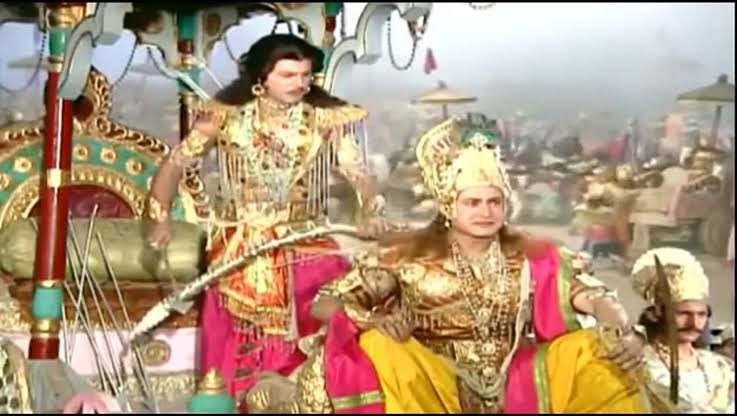

Do these guys even know what “B.C.” means? They need to be careful about offending the saffron brigade by acknowledging the existence of another religion. The opening dateline, written in Hindi, says “Dwapara Yuga, approximately 2000 B.C.” This is a bit like saying "Indraprastha, located approximately 8,000 miles east of New York". After this, a long cosmic zoom-out reveals that our solar system is but a speck in the waggling ear of the elephant-headed Lord Ganesha as Vyasa prepares to compose his great poem with Ganesha as his transcriber, we may expect that the story will be narrated chronologically from episode 2 onwards. At the end of the episode, the actress playing Draupadi turns to the camera and shrieks something to the effect that whenever a woman is insulted or dishonoured, a great war will take place and the world will be changed (which leads me to wonder if Ekta and her scriptwriters follow the daily news at all). Most of the Pandavas are shown in silhouette (possibly because the casting hadn’t been finalised when this episode was shot), Shakuni giggles continually and resembles Dr Evil in the Austin Powers films, Duryodhana has impressive breasts and there is unintentional phallic imagery in the worm’s eye shots of Bhima’s mace limping impotently between his legs.

In the first of many inventive twists, the kahaani begins not at the beginning but with the game of dice and the attempted disrobing of Draupadi – which, we are told, is the single most important incident in the epic. The first episode was telecast last night and though it didn’t feature the Tushhar Kapoor item number I had been hoping for, there was lots else to relish. When I wrote this post about Ekta Kapoor’s Kahaani Hamaaray Mahabharata Ki, I had no idea how summarily the actual show would outstrip my expectations.

Once again, real life makes satire seem feeble.


 0 kommentar(er)
0 kommentar(er)
